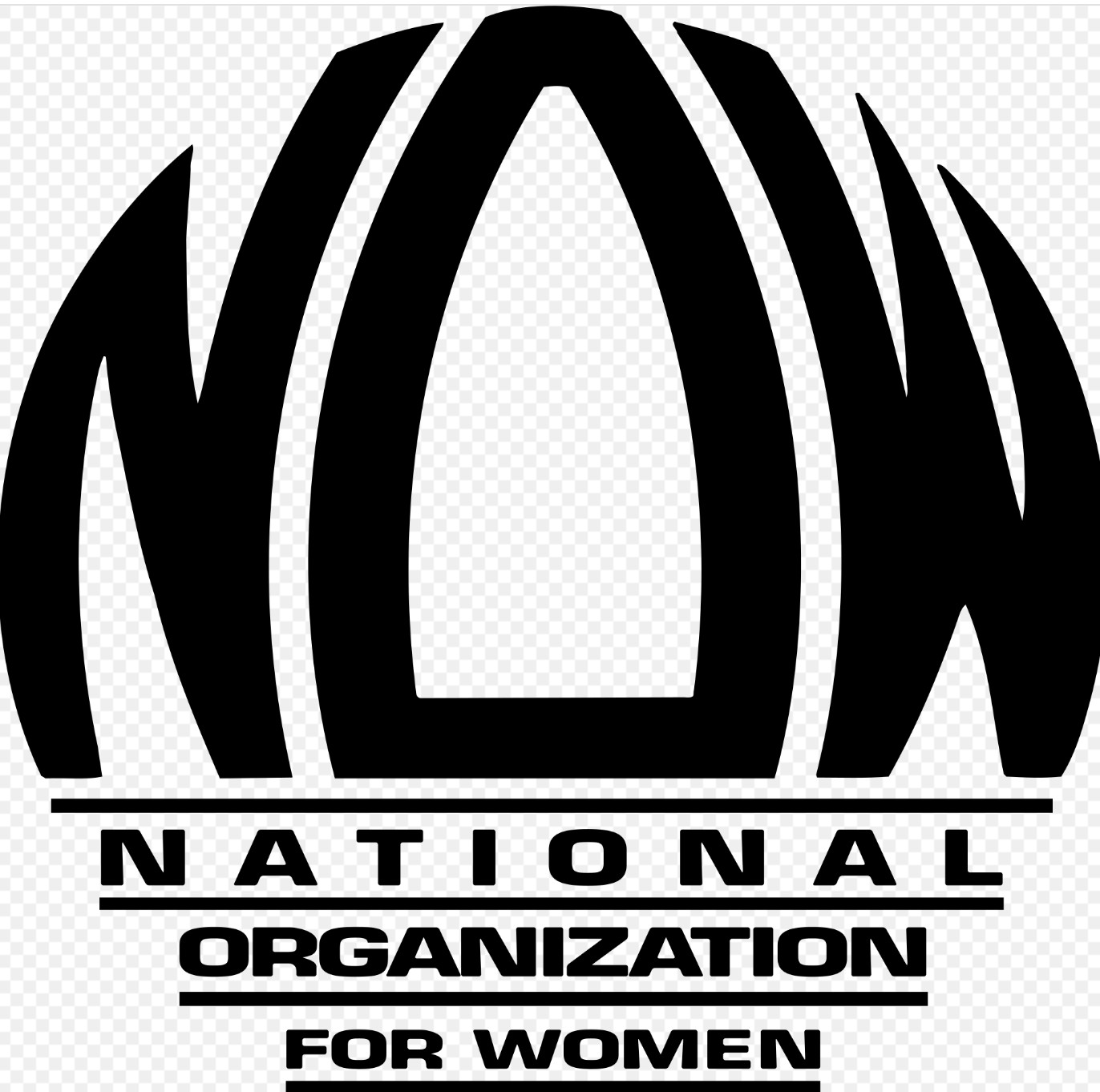National Organization for Women (NOW)
History and Geography 1966-1984
 NOW's logo was designed by Ivy Bottini in 1969
NOW's logo was designed by Ivy Bottini in 1969
by Ella Gouran
The National Organization for Women (NOW) was founded in 1966 following the Third National Conference of Commissions on the Status of Women. Betty Friedan, Pauli Murray, and 26 other women decided that a new organization was needed to accelerate the fight for equal rights for women. A founding conference was held in late October 1966, by which time 196 charter members had joined.
In the following year, the new organization began to recognize chapters but did not have a plan in place to organize local units until the end of the decade. Then it began to grow into a mass organization. In 1971, NOW listed 186 chapters with 5,000 members. That number more than doubled by 1973 as NOW led fights for abortion rights and the Equal Rights Amendment (ERA). By 1975, the national office listed 643 chapters in virtually every substantial city in the United States. In 1978, the organization claimed more than 100,000 members, jumping to 220,000 in 1982.
This project tracks that remarkable expansion and the activism it represented, using organization records to explore the initial geography of this critical social movement.
NOW is the largest, most respected, and most enduring of the organizations involved in the second wave of U.S. feminism. Today it claims more than 500 chapters and 500,000 members.
In the maps below, we show locations and information about the growth of membership and chapters based on official NOW records donated to Harvard Radcliff Universities. The first full list of chapters is from 1971 when 186 were reported. We have pieced together information about earlier years but lists from 1967 to 1970 should be regarded as incomplete. Starting in 1971, our charts show an increase in the total number of chapters with hundreds of new chapters being added every year until 1975. We were not able to locate records for the following six years but resumed collecting data and observing changes in 1982 and 1984.
[Introduction continues below maps]
Move between map and charts using the tabs below
Introduction continues:
Inspired by civil rights movements that had been winning legislation and court decisions in the mid-1960s, NOW turned initially to lobbying government agencies to enforce the 1964 civil rights act with its ban on discrimination on the basis of sex. But soon it was doing much more, encouraging members to run for office, promoting consciousness-raising through small group discussions, supporting sex discrimination lawsuits, and organizing dramatic public demonstrations. Each of these strategies embodied NOW’s desire to promote activism for gendered equality rather than only education.
The emergence of radical Women’s Liberation organizations pushed NOW into bolder actions in early the 1970s even while the organization maintained its initial appeal to middle-class married women and especially homemakers.
Successes were numerous, including various battles against discriminatory hiring and employment. As chapters spread, they pushed for abortion rights at the state level, winning reforms in several states and setting up the 1973 Roe v. Wade Supreme Court decision. Congress responded to the campaign for an Equal Rights Amendment, passing the amendment in 1972 and sending it to the states for ratification. For next decade, ratification of the ERA was NOW’s top priority.
However, growth in membership created organizational challenges. Many campaigns were organized at the national level, leading to feelings of isolation by members and concerns about dues-sharing and the effectiveness of a top-down structure. NOW also faced critiques for its primarily middle-class membership and its relationship with African American women’s struggles. Alhough Black women joined NOW, Black feminists challenged the organization for focusing too much on inequalities between men and women rather than those between women which were often based on race or class.
There is much to be learned by moving year by year through the maps above. In 1971, chapters were concentrated in California and along the east coast in New Jersey, New York, and Pennsylvania. Wisconsin, Michigan and Ohio also claimed a significant number in those first years. By 1973, the organization was spreading through the South as the ERA ratification campaign heated up. And after 1975, the maps show chapters spreading across the Rocky Mountains states in the West.
Sources and methods:
Data for these maps were transcribed and calculated from the following digitized documents from the Records of the National Organization for Women at Harvard Radcliffe Schlessinger Library: "Charter Membership, September 1966" Sch00300c00027; "NOW chaters," 1971, Sch00300c03721; "Chapter Status Report," 1973, Sch00300c02938; "Codes of NOW Chapters January, 1975," Sch00300c02937; "NOW Chapters in Central Dues Collection States, April 1982," Sch00300c022935.
Addition information from Katherine Turk, The Women of Now: How Feminists Built and Organization that Transformed America (Farrar, Straus and Giroux, 2023), and Maryann Barakso, Governing NOW: Grassroots Activism in the National Organization for Women (Cornell University Press, 2004)
Research and data development by Ella Gouran

 NOW's logo was designed by Ivy Bottini in 1969
NOW's logo was designed by Ivy Bottini in 1969